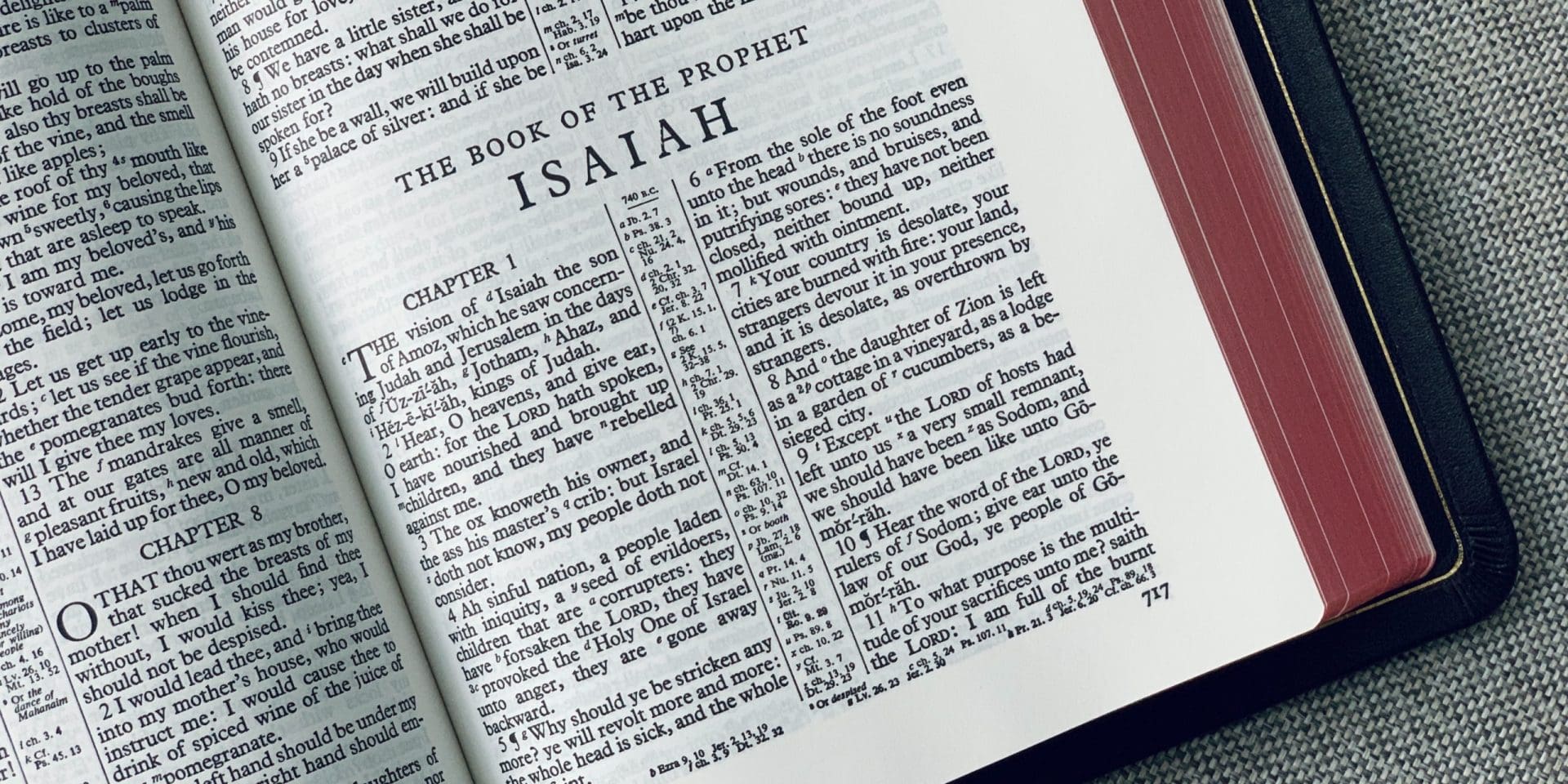Isaiah is the first of the major prophets of the Bible. His book is also the longest of the prophetic books as it is composed of sixty-six chapters.[1] Notably, chapters 1-39 have quite a different style and tone than chapters 40-66 do. While the first 39 chapters generally focus on God’s judgments, the last 27 are largely words of comfort and hope for God’s people.
What’s interesting is that Isaiah’s structure and dramatic thematic shift seems to parallel the Bible. For example, just as Isaiah has sixty-six chapters the Bible has sixty-six books. But it doesn’t end there because the Old Testament’s 39 books, like Isaiah’s first 39 chapters, focuses more on the bad news while the New Testament’s 27 books like Isaiah’s last 27 chapters focuses on the Good News. Moreover, Isaiah 40 opens with a prophecy about the one who will make the paths of the Messiah straight (40:3-5) just as the New Testament opens up with the fulfillment of that prophecy through John the Baptist (Matthew 3).
“It is a theological masterpiece, managing to contain in its 66 chapters virtually the whole of biblical theology.”
John N. Oswalt
While this is certainly interesting it is important to realize that these similarities are superficial for at least two reasons. First, the chapter and verse divisions in the Bible were added long after the Scriptures were completed meaning that these divisions (while helpful) are not divinely inspired.[2] The chapter divisions were created around AD 1227 by Stephen Langton and were first used in Wycliffe’s Bible completed in 1382.[3] The verse divisions were created even later. “The verses of the Old Testament were developed by a Jewish rabbi named Nathan in 1448. The New Testament’s verses were developed in 1551 by Robert Estienne (also known by the name Stephanus). His divisions were first used in the Greek New Testament published in 1551 and were used again in a French Bible in 1553. The influential Geneva Bible from the sixteenth century was the first Bible to include both chapter and verse divisions for both Old and New Testaments.”[4]
The second reason that the structural similarities between Isaiah and the Bible are superficial is that there are different ways of counting the Old Testament books. For instance, what Christians count as 39 books Jews count as only 22 (or sometimes 24) even though the content is exactly the same. The reason for the differences is because Jews consider two-volume works such as Samuel, Kings, and Chronicles as one.[5] Jews also combine the twelve minor prophets into one book as well as Jeremiah with Lamentations and Ezra with Nehemiah. As a result, the number of books in the Jewish version of the Old Testament is only about 22 meaning that the total number of Biblical books would be 49 not 66.
Of course, just because the manmade divisional parallels between Isaiah and the Bible are artificial doesn’t mean that there are no parallels. It just means we have to look deeper. As one scholar puts it, the book of Isaiah manages “to contain in its 66 chapters virtually the whole of biblical theology, from God’s transcendence through creation and redemption to the final destiny of the cosmos.”[6]

Ryan Hembree is a daily co-host, speaker, and writer of Bible Discovery. He also hosts a YouTube channel that shows the unity of the Bible and how science and Scripture fit together. Ryan also has an honorary Masters of Ministry in Creation Science from Phoenix University of Theology.
[1] While it’s true that Isaiah has the most chapters, Jeremiah is technically longer. In fact, “Jeremiah is the second longest book of the Bible, next to the Psalms.” Ron Hembree, Quick Study Bible, P.960.
[2] Clearly, they are not inspired as there are some awkward chapter and verse breaks in the Biblical text.
[3] https://www.compellingtruth.org/divided-Bible-chapters-verses.html
[4] Ibid.
[5] Originally these two-volume works were one book but because they were written on scrolls, they had to be separated due to their physical size. So Samuel became 1-2 Samuel, Kings became 1-2 Kings, and Chronicles became 1-2 Chronicles.
[6] John N. Oswalt, NIV Biblical Theology Study Bible, Introduction to Isaiah, P.1159.







Hello, the link has already been made between the book of Isaiah and that of the Bible, i.e. the last revelation (new testament/new covenant). There is no need to compare with the Torah, which is not yet complete (the Messiah has already come!). This comparison is therefore legitimate, and this supernatural discovery strengthens Protestantism in the face of the Catholic versions of the Bible, which contain over 70 arbitrarily assembled books. These 66 books, whatever one may say, were supernaturally inspired by the spirit of God to Isaiah, and we must not dismiss the fact that God may have led scholars to divide the Bible (which means collection of books) into 66 parts. It's exactly the same with the dozens of translations of the Bible into different languages, each of which was (I believe) inspired by God to extract the full depth of their words from the rich ancient languages. The details are more or less developed throughout the Bible translations we can read, and this gives us a better insight into God's word, which has so much to tell us!
I like it